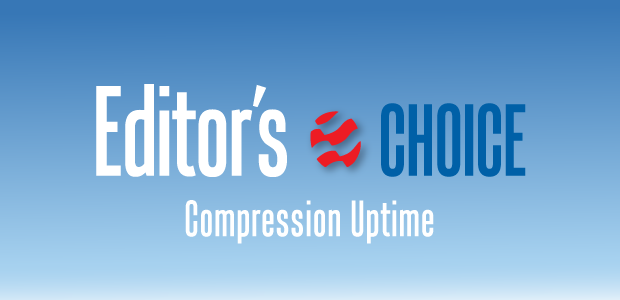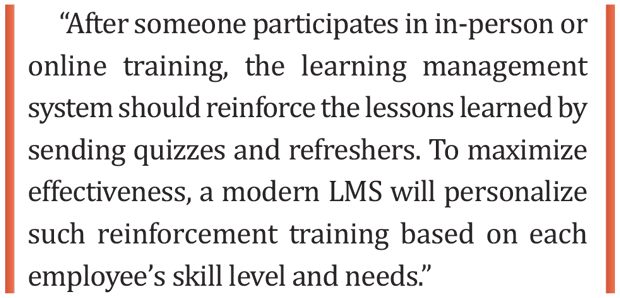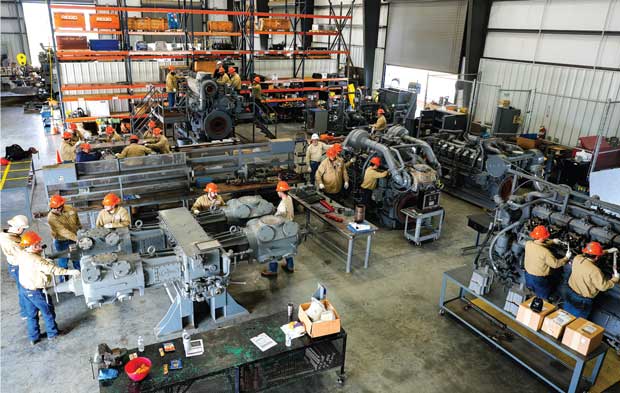
Methodical Technical, Safety Training Accelerates Efficiency
By Jeffrey Paduano
Robust learning ecosystems are allowing organizations to nurture the talents and expertise of employees and supervisors while identifying training needs through periodic “gaps analyses.” Whether their goal is to prepare new employees for work in the field or bolster seasoned technicians’ skills, smart service companies are developing comprehensive training programs that apply several learning modalities, including micro lessons distributed online; how-to-videos; OEM, vendor and customer training; and one-on-one mentorships.
Effective training will only become more important amid growth in the amount of infrastructure that needs to be maintained and the hydrocarbon volumes that need to be moved to market. That is exactly what is happening in 2024, with record oil and gas production, the build-out of pipeline infrastructure from Texas to the Virginias, and the stepladder-like hike in liquefied natural gas exports punctuating the need for highly trained and motivated workers.
Today, combining proven and novel training methods to help employees master essential skills is as front and center as state-of-the-art technology throughout a responsible company’s chain of command.
Learning Management Systems
A bedrock of a sophisticated learning management system (LMS) is making the powerful tool incentivize and facilitate what can become baked-in daily training for workers’ mindsets. A properly designed and executed LMS system is one that executives, managers and employees see as a beneficial and rewarding part of their workdays. It also can be the ground floor for a company streamlining the process of accessing, completing and tracking more specific personal development plans.
One of the most compelling features of a modern LMS is its ability to gamify learning experiences. Whether a company incorporates badges or other rewards for reaching training milestones, it can create healthy competition and motivation for employees, while promoting safety and higher performance that ultimately benefits customers.
Gamification and microlessons help reinforce companies’ initial training programs, which can be extensive. For example, at Archrock, all new field service technicians participate in a two-week program on field operations shortly after joining the company.
One of many customer-satisfaction-directed programs underway at companies throughout the industry, the two-week program lays a foundation for deeply understanding compression equipment, safe and sound field operations, and the company’s values and culture.
Any effective training regime for new hires, regardless of experience level, should begin with in-house safety instruction to demonstrate that safety is indeed first. Through courses that include in-person instruction, videos and interactive e-learning, new employees need to be taught Occupational Safety and Health Administration standards, as well as those of their new workplace, which often are even more stringent.
The LMS allows employees to access and review all available safety-related curricula from the time of initial training onward. Topics range from CPR to safe driving. Because almost everyone drives as part of daily life, it can be easy to assume employees know how to do it safely. However, vehicular accidents are the oil field’s leading cause of death. A driving course helps prevent accidents by reminding employees to pay attention to the road, themselves and the environment, and by addressing driving variables that may be unique to oil field vehicles and/or driving scenarios.
In addition to safety courses, training should provide a comprehensive overview of company operations, services and key systems. For example, a company that provides compression services should teach a “Compression 101” class that explains compressors’ upstream and midstream applications and how the company operates its compression fleet.
During that first multiday training segment, employees should receive detailed instruction on the workings of the LMS and the computerized systems on which they will rely while performing day-to-day duties, such as tools for accessing work orders, ordering parts and reviewing historical data on compressor packages in need of service. Employees also should learn about the telematics software and equipment that enables remote monitoring and runs engine diagnostics.
Verifying Understanding
The end of the first group of courses is an ideal time to administer a competency assessment that will guide technical training and development paths for each employee from then on. Paths vary by position and experience. Some positions require more than 70 core competencies, or topics that need to be addressed. The assessment should be detailed enough to allow a company to determine how many of these competencies have been mastered and what else is needed. Two hours seems to work well in most scenarios.
In the compression industry, competencies can cover topics such as cooler systems, engine theory, gas analysis, and electronics and schematics. Some competencies may involve training from engine and compressor frame manufacturers that aim to ensure employees know how to work on specific products. The standards also explain how to perform natural frequency tests to calculate flow, as well as obtain details on preventative maintenance, fire safety, lockout/tagout procedures, lubrication systems and other topics that are relevant to daily operations and troubleshooting.
Even the best training programs can improve with time. To identify their next steps forward, training managers should periodically conduct gaps analyses, which involve comparing training’s expected outcomes to the reality in the field, as well as surveying evolving best practices in the training space. Any shortfalls should be rectified through changes to training or other processes. For example, if the gaps analysis reveals that new technicians frequently misdiagnose problems that exhibit similar symptoms, the company can update its training materials to clarify how to distinguish between them. Over time, such improvements will minimize training gaps across the organization.
Competency assessments can inform gaps analyses, but it’s often helpful to gather other information. The Kirkpatrick model, a popular technique for evaluating training’s effectiveness, advises companies to investigate:
- Whether employees find the information engaging and relevant;
- How well employees retain the relevant knowledge;
- How effectively employees apply that knowledge on the job; and
- Whether the training ultimately succeeds in achieving the desired business outcome.
The competency test helps companies gauge each new employee’s experience level and skills. This information can be shared with a supervising service manager, who will work with employees during training to formalize a personalized development plan that reflects their goals and will guide future reviews. After initial training ends, the training plan can remain an integral part of employee advancement by, for example, granting access to courses and certification training opportunities from vendors.
Safety Emphasis
The second group of training sessions—which, like the first, may last about one work week—should begin by reemphasizing safety with hands-on experience. Policies and procedures should be reviewed to ensure new employees know how to comply with safety standards designed to protect them and their coworkers.
During the opening sessions, flame-retardant clothing, hard hats, safety goggles, earplugs and other personal protective equipment can be issued along with training on how to properly wear and maintain the items. Clothing needs to be tried on to confirm it fits. Safety instruction is embedded in sessions throughout the remainder of the training process.
In fact, before any subsequent shop training begins, employees should learn and perform a job hazard analysis (JHA) and ascertain their related absolute authority to “stop the job.” The JHA process involves inspecting a site to identify any safety concerns, then taking steps to mitigate those concerns before work commences. It includes verifying that employees are wearing the right protective clothing, gloves and gear for the situation. All trainees should be required to sign the document, exactly as is required for all employees in the field.
After the JHA process is taught and performed, training sessions should simulate common field situations. Instruction probably will take a hybrid approach that mixes in-person instruction with videos and hands-on learning. The goal is to target all learning styles and make sure new employees grasp this pivotal material.
Individual instructors or a team of instructors can review what is required to document job site conditions and perform actual work.
Hands-on training class sizes are likely to vary. Ideally, larger classes should be overseen by multiple trainers so trainees can be divided into smaller groups to ensure they receive any necessary individual attention and answer all their questions. Smaller groups also help trainers assess knowledge levels. In groups, trainers can focus on different aspects of troubleshooting with different tasks at the same time.
Training sessions should begin with basics and build up to more detailed diagnostics and problem-solving. In addition to in-person instruction, courses at a training site often include 15-minute videos to reinforce retention. For instance, a series of videos can begin with an overview of how engines work, then gradually dive into details. Through the LMS, the courses can be accessed in the future when a technician wants to brush up or is troubleshooting in the field.
Realism and Repetition
Trainers should simulate bugs or problems in the field. Before class begins, the instructor can alter operations on a piece of equipment to make it function improperly, giving students the opportunity to walk through diagnosing the problem and correcting it. The “malfunction” should vary by session so new employees have a chance to practice troubleshooting processes repeatedly.
Problems simulated during compressor-focused training frequently include excessive fluid, bad sensors, bad gas and faulty dump valves. The training builds on itself, with employees first learning about the equipment and then about common corrections that need to be made. Employees should be taught deeply enough that they not only can identify and fix the problem, but also understand why it is occurring.
As part of troubleshooting, a compressor technician in training will learn how to shut down a unit, interpret codes and use control units. All lockout/tagout processes should be reviewed and performed. Instruction also should explain how to properly torque fittings, perform inspections and double-check work, emphasizing everything the technician will be expected to do in the real world.
Courses on electronics and schematics can include kits for building and troubleshooting circuits. That type of training should culminate in tracing out wiring on a piece of equipment to identify faults and inspect and replace sensors. As part of their training, new hires learn where sensors are and how they work.
Sessions should teach routines performed by individuals as well as those that involve groups, such as tasks that require one employee to operate a crane while another guides a piece of heavy equipment into place.
Repetition is key to retention. Therefore, all learned processes should be performed in order multiple times during the training week.
Training also should highlight the importance of minimizing compressor downtime, a major focus for compression service providers and their customers. Toward that end, training must cover telematic tools that allow service companies and their technicians to potentially detect and diagnose a problem remotely. This proactive approach frequently enables technicians to requisition the right tools and parts before they arrive on site, which speeds the repair and reduces the number of trips to and from the site and the accompanying drive time.
Continuous Reinforcement
After someone completes in-person or online training, the LMS should reinforce the lessons learned through quizzes and refreshers. To maximize effectiveness, a modern LMS will personalize such reinforcement training based on each employee’s skill level and needs. When an employee logs into the LMS, it flags high-priority topics.
To evaluate an employee’s skill level, the LMS starts by asking three-five questions a day. Once an employee demonstrates expertise in a specific skill, the system will stop asking questions about that skill for a while. However, it will begin the process anew later to help the employee recall information.
If an employee answers with less confidence, the LMS will ask more questions about the topic to help reset the “forgetting curve.” All performance verification should be tracked to support service managers’ efforts to gauge their team members’ strengths and weaknesses and to identify ways to improve performance.
To improve retention, training should give technicians several opportunities to practice essential skills in realistic environments. These skills include everything from performing job hazard analyses to diagnosing and fixing common problems.
The LMS is, in essence, a whole learning community. It allows employees to find information by typing a request into a search bar. Employees can watch videos or review e-learning content during training or in the field. They can access online vendor certification courses by clicking or tapping a link in the tool.
Modern LMS platforms often encourage training by gamifying it. For example, they may award points that can be redeemed to receive specific prizes or enter raffles for mugs, hats and other items. The platforms also celebrate training milestones through virtual certificates and badges.
Gamification helps motivate employees to return to the portal. At Archrock, 98% of the target field service and shop employees voluntarily log into the LMS at least once a month, and on average, those employees access the training platform 13 times a month.
Practical Experience
Field experience can make training far more relevant, providing an ever-broader and deeper foundation on which later lessons can rest and to which connections can be made. With that in mind, it’s often worth following entry-level technicians’ initial training with a few weeks of additional training after they have spent time in the field. This follow-up training should be divided into one-week increments to keep the information digestible and allow technicians to incorporate lessons from the first week into their work before they proceed to the second or third week.
All new employees, regardless of skill level, should be required to participate in a mentorship program for a full six months before they are released to the field by themselves. New employees are shadowed by experienced and carefully selected and trained mentors who have been through the entire training program and demonstrated mastery in the field. These mentors provide the new employees with feedback on their work that builds expertise and confidence.
Training should not be restricted to new employees. To provide ongoing instruction, companies can implement on-the-road training programs through which trainers go to a work site and walk employees through a task as they do their jobs. On-the-job trainers can deliver the latest information on a variety of topics, including sensor repair, preventative maintenance and emissions tuning for compressors. Each class can be customized to meet the needs of specific business units.
Virtual and Augmented Reality
Eventually, virtual and augmented reality may become a key component of training programs. Whether it is accessed through a phone, tablet or computer, such training can provide more memorable and efficient instruction. For example, instead of scrolling through text and photos to learn about a compressor, students may view a 3-D model of a complete compressor package. To learn about its parts and structures, students need only click or tap an area to zoom in on it, conceptually even disassembling the compressor package and its components and then virtually reassembling the equipment.
Many VR training modules present students with a scenario and ask them to troubleshoot by choosing between several options. After each choice, the module shows the consequences. This lets students practice essential skills without putting themselves or the equipment at risk.
In addition to helping field hands, 360 virtual reality training can provide office employees with a better understanding of what the company is doing in the field. That sense of the bigger picture can increase employees’ motivation and enable them to support field work more effectively.
Although most training focuses on safety and technical skills, a comprehensive training program also should give service managers and other senior-level employees ways to strengthen their leadership skills through webinars, in-house classes and interactive e-learning on topics such as team building, communication, business management and finance. These soft skills contribute to safe, consistent performance and employee retention.

JEFFREY PADUANO is the digital content and instructional design manager at Archrock, a natural gas compression services company focused on U.S.-based contract operations. He leads a team of instructional designers who create and deliver safety and technical learning solutions, and oversees design and management of digital content for technical training and other applications. In addition to having 10 years of experience in talent development, Paduano holds an M.B.A. from Texas A&M University.
For other great articles about exploration, drilling, completions and production, subscribe to The American Oil & Gas Reporter and bookmark www.aogr.com.


















